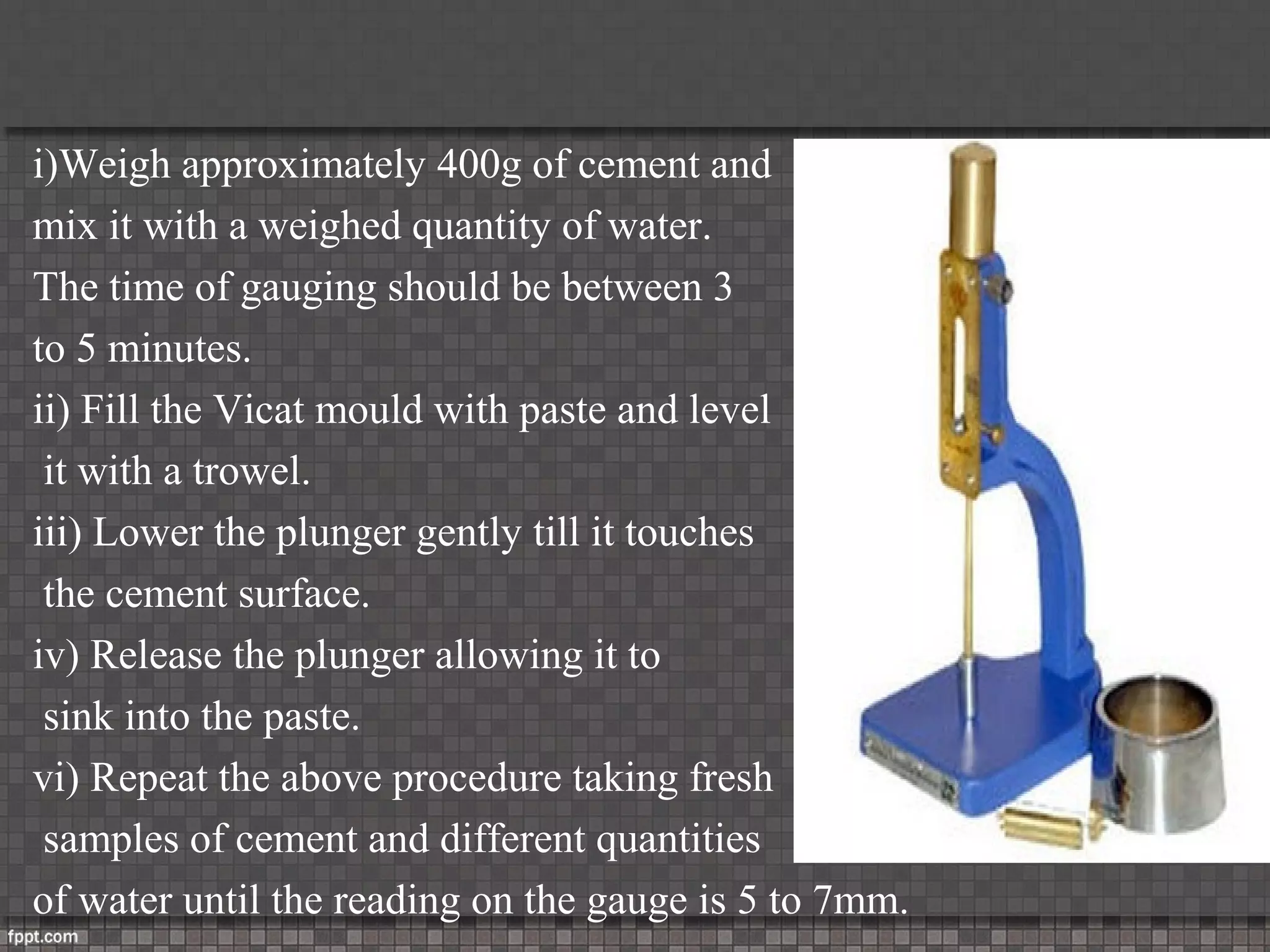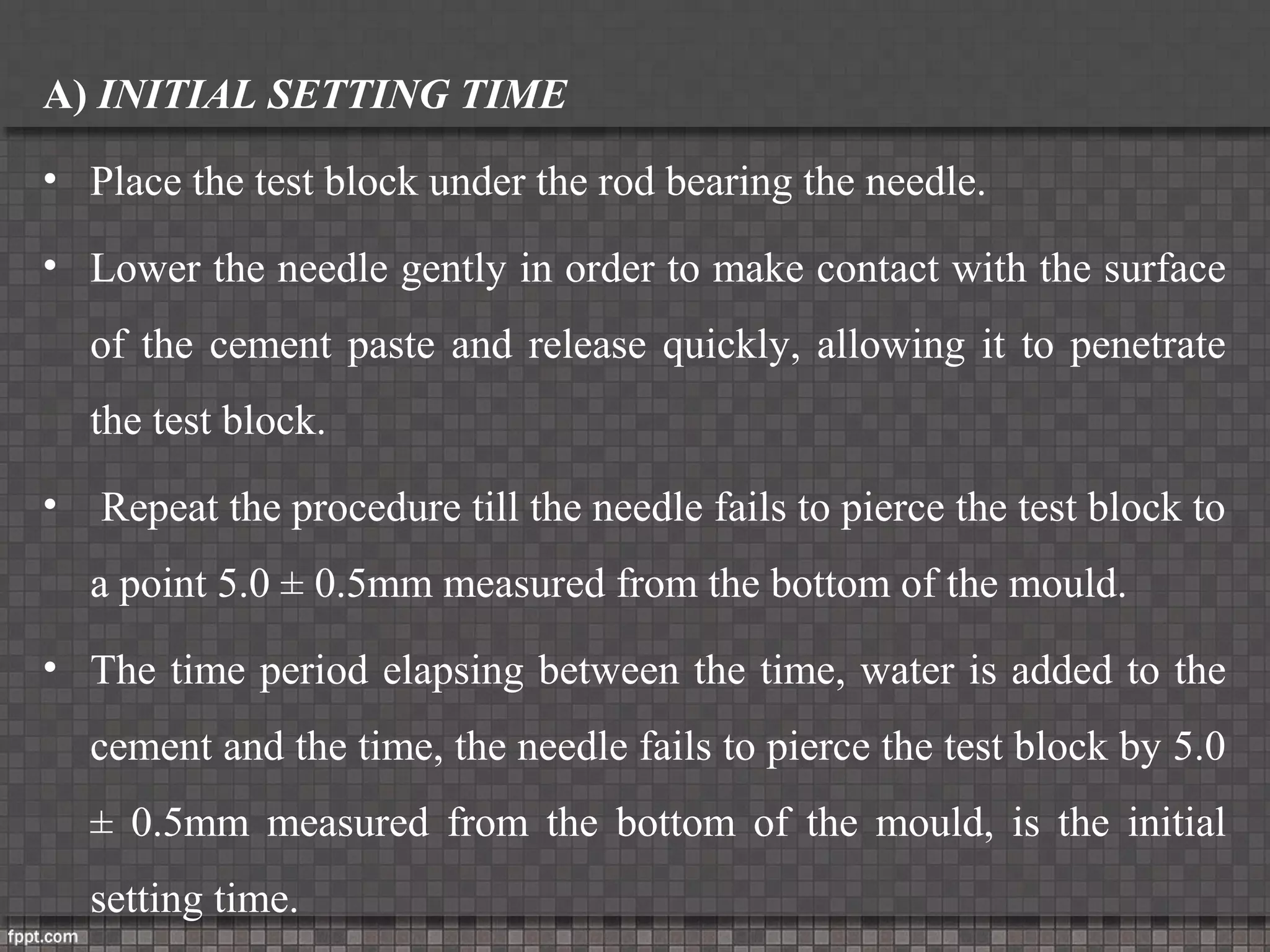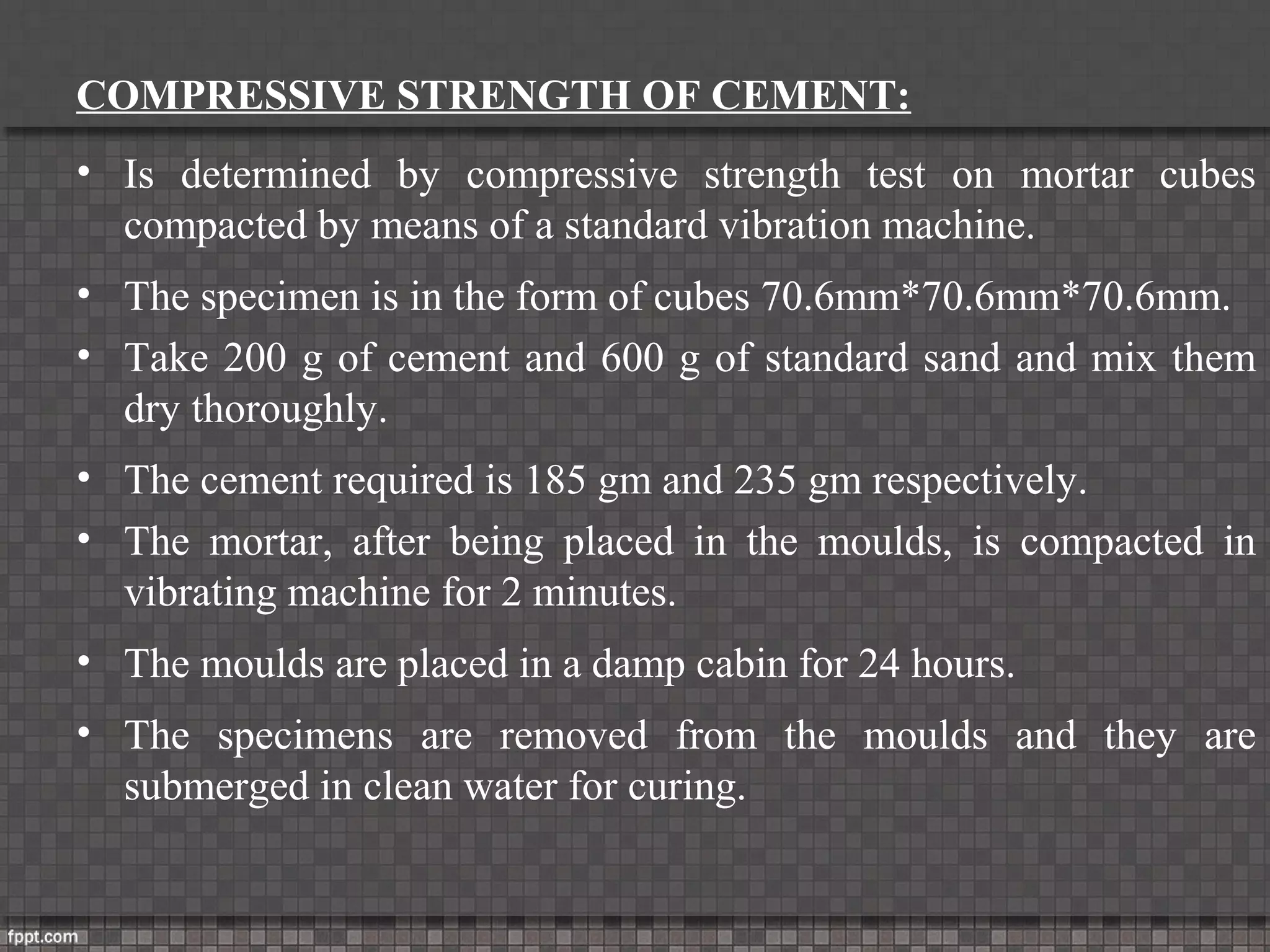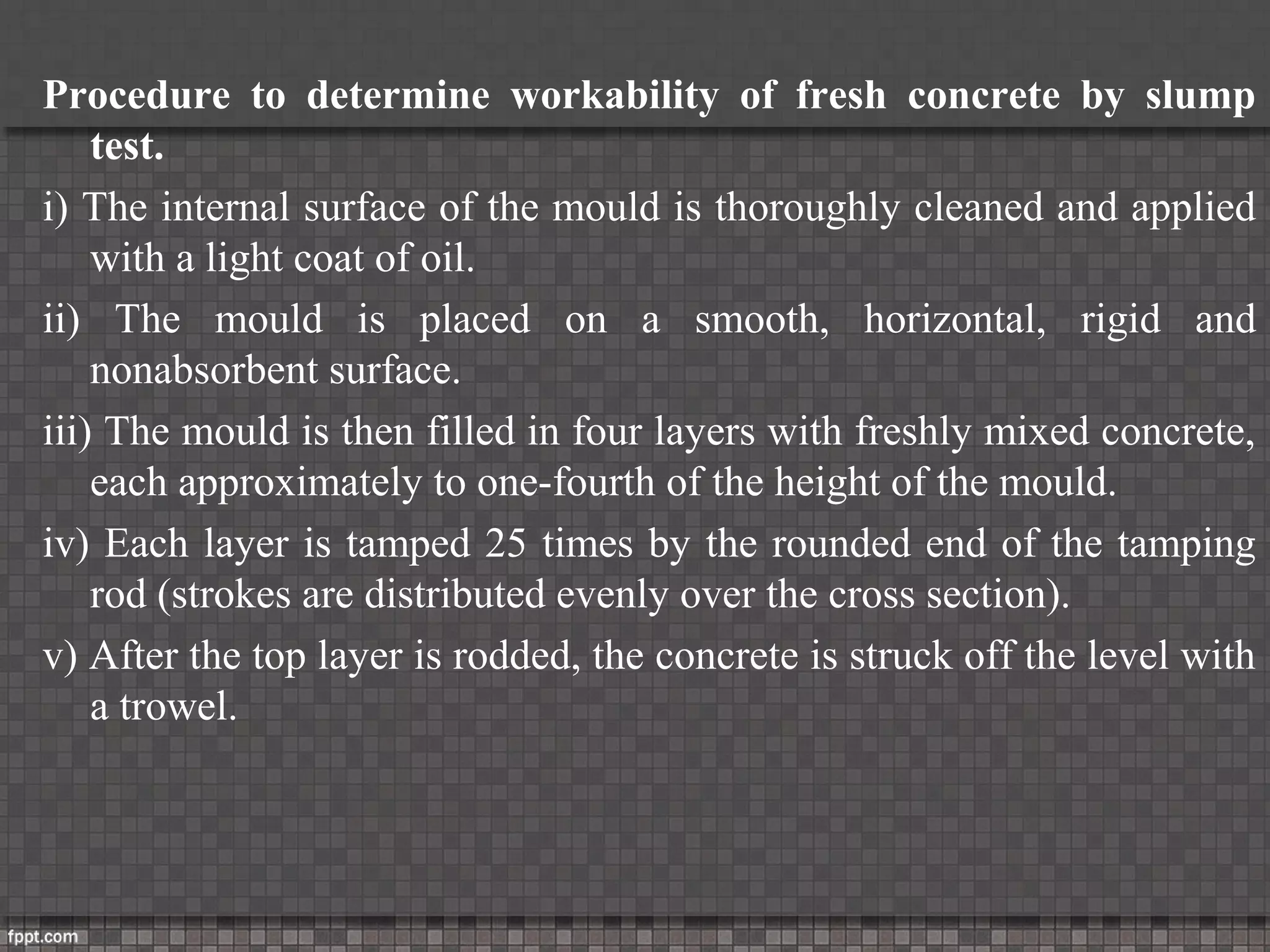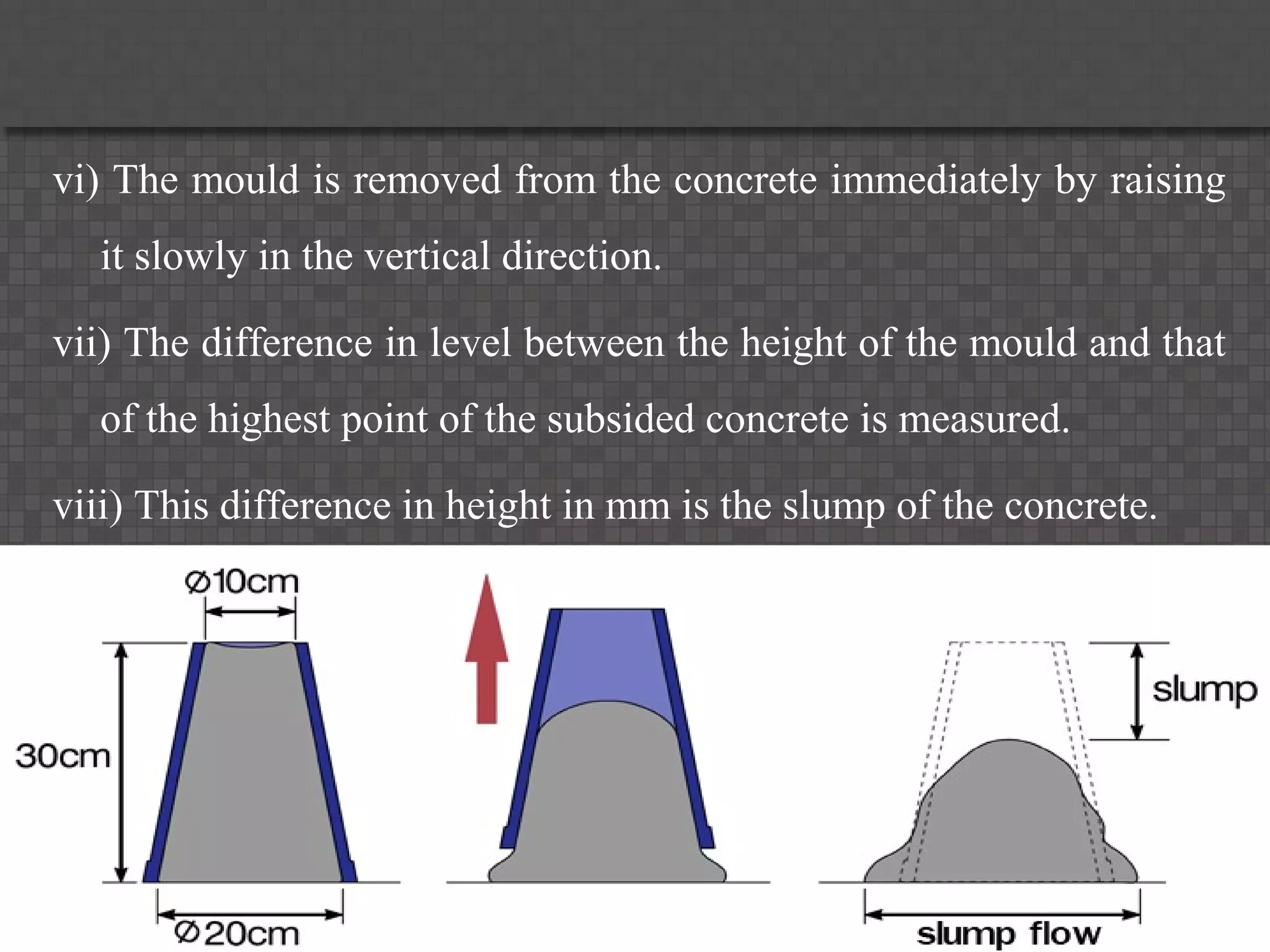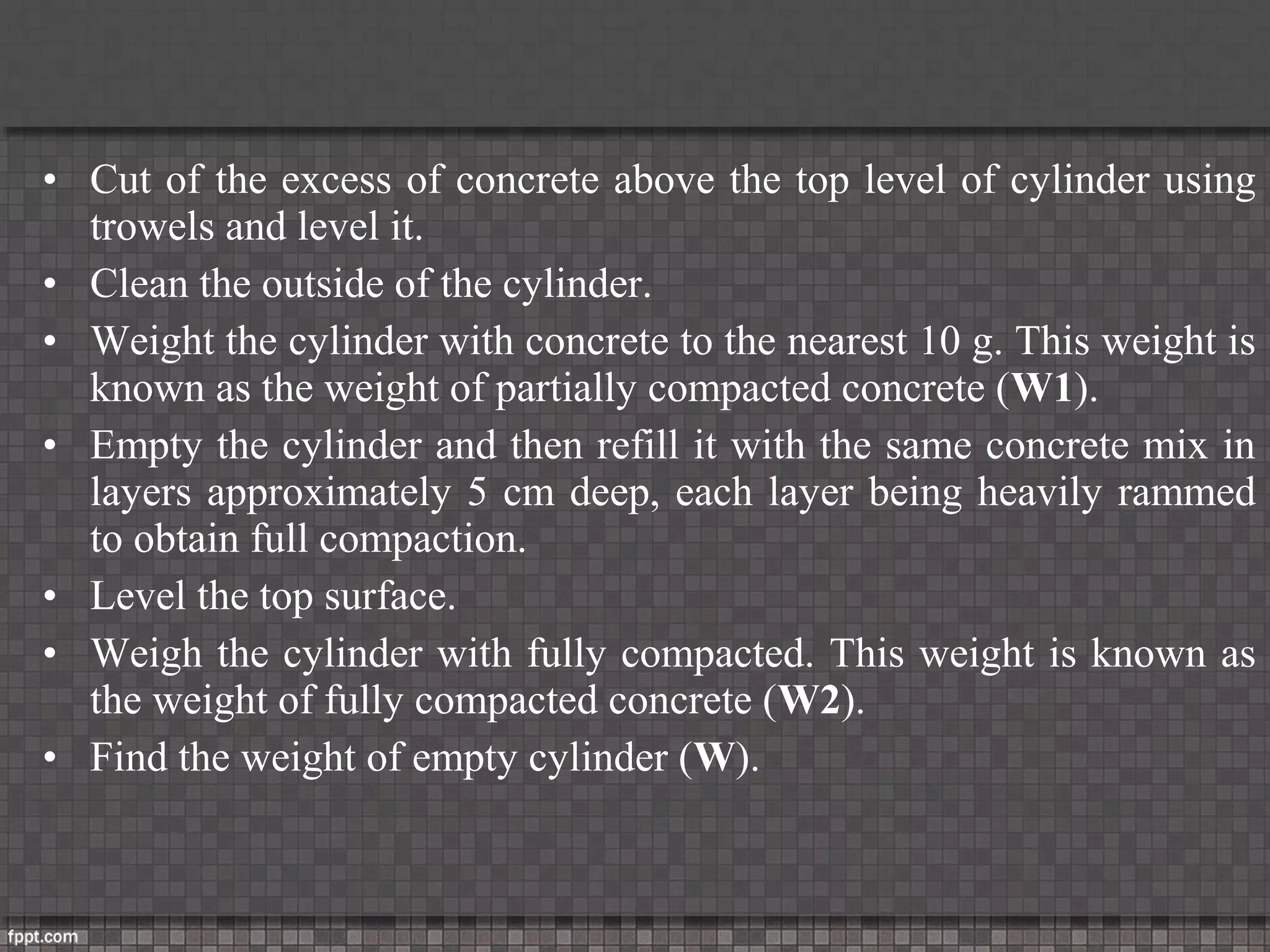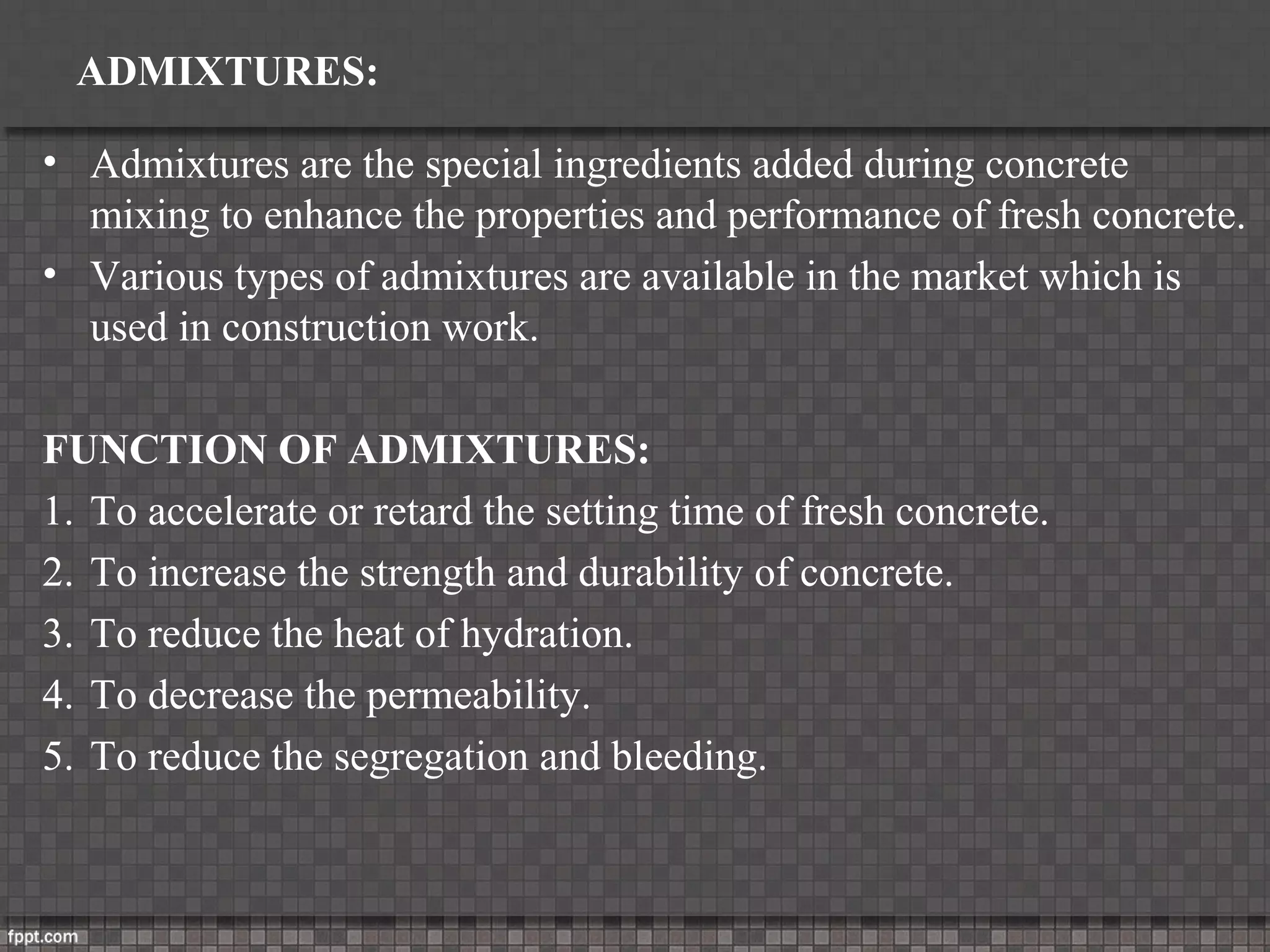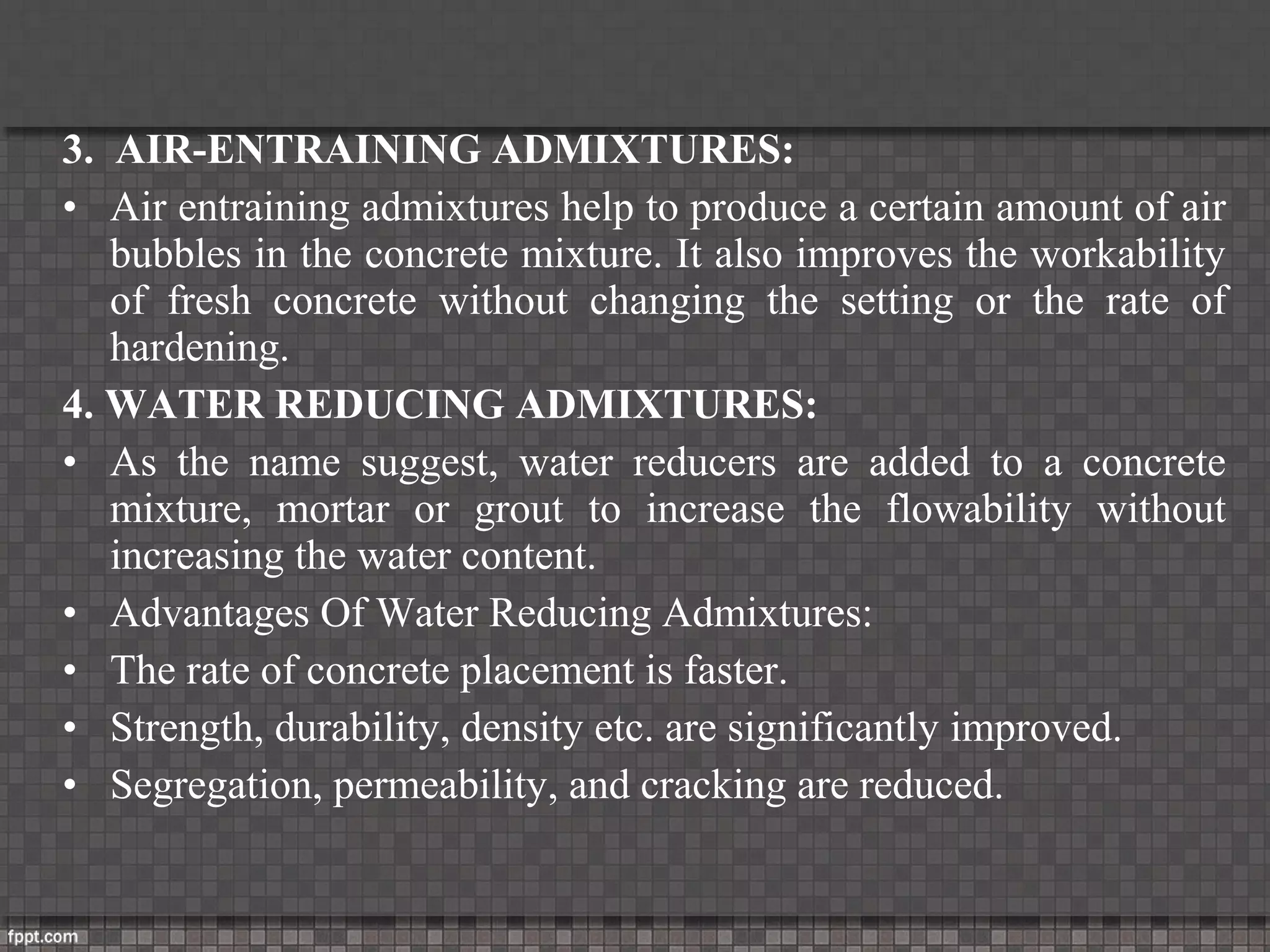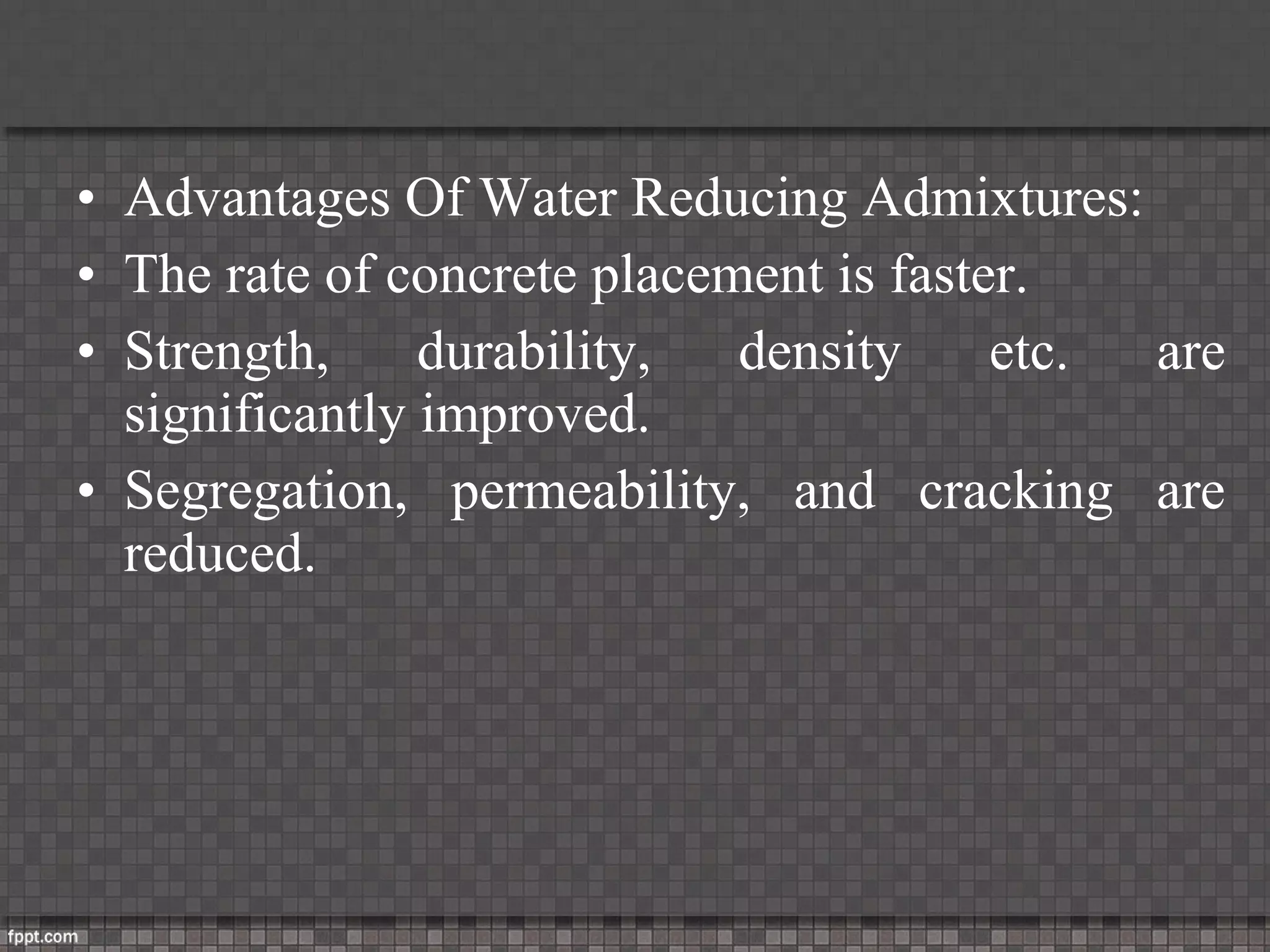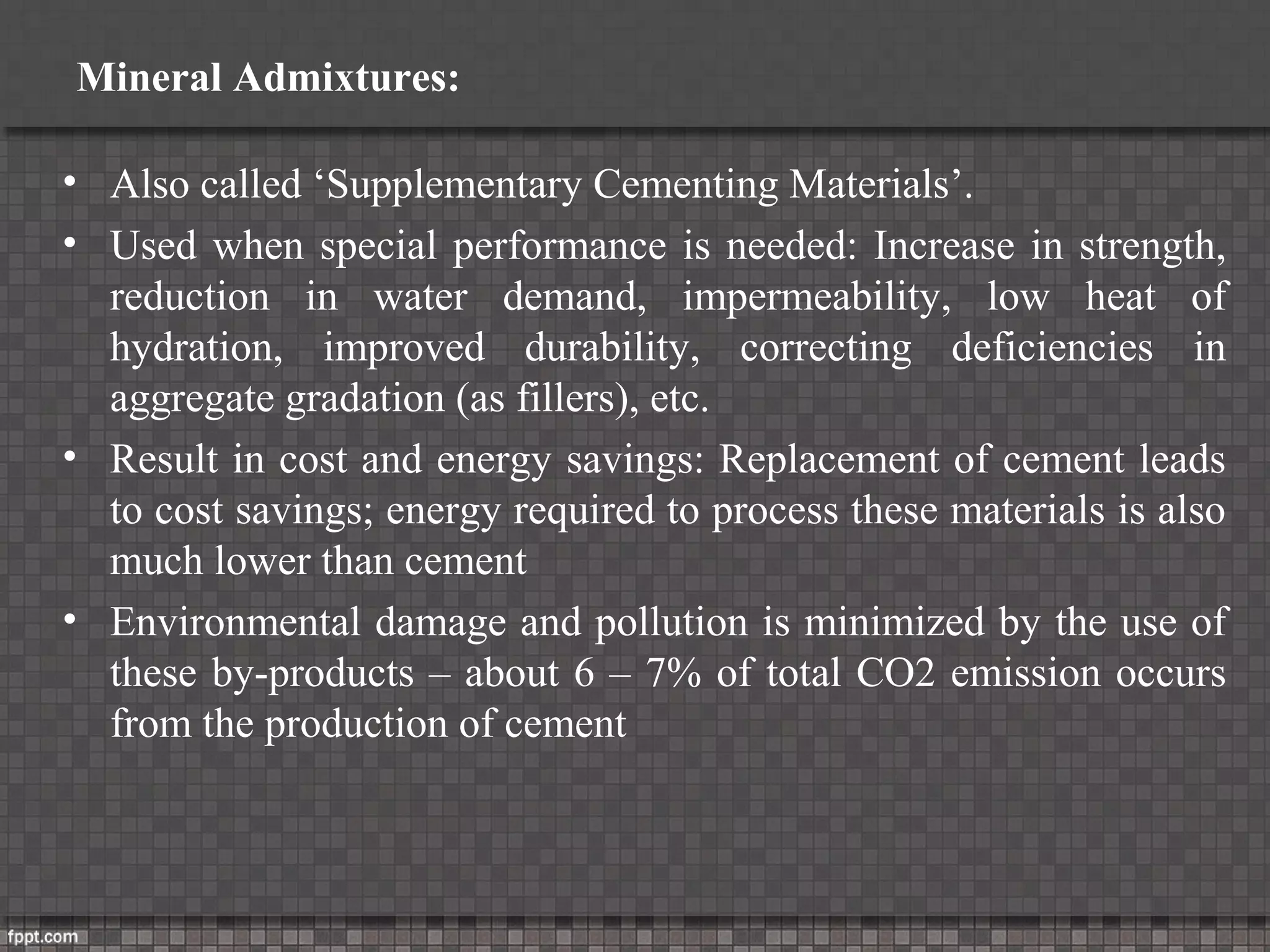1. This document describes various tests conducted on cement and concrete to determine their properties and quality, including fineness, consistency, setting time, soundness, compressive strength, and workability.
2. Tests are also described for determining water demand and the effects of admixtures on properties like setting time and strength.
3. Common admixtures include accelerators, retarders, air-entrainers, and water-reducers, which can improve concrete workability, permeability, cracking resistance and durability.



